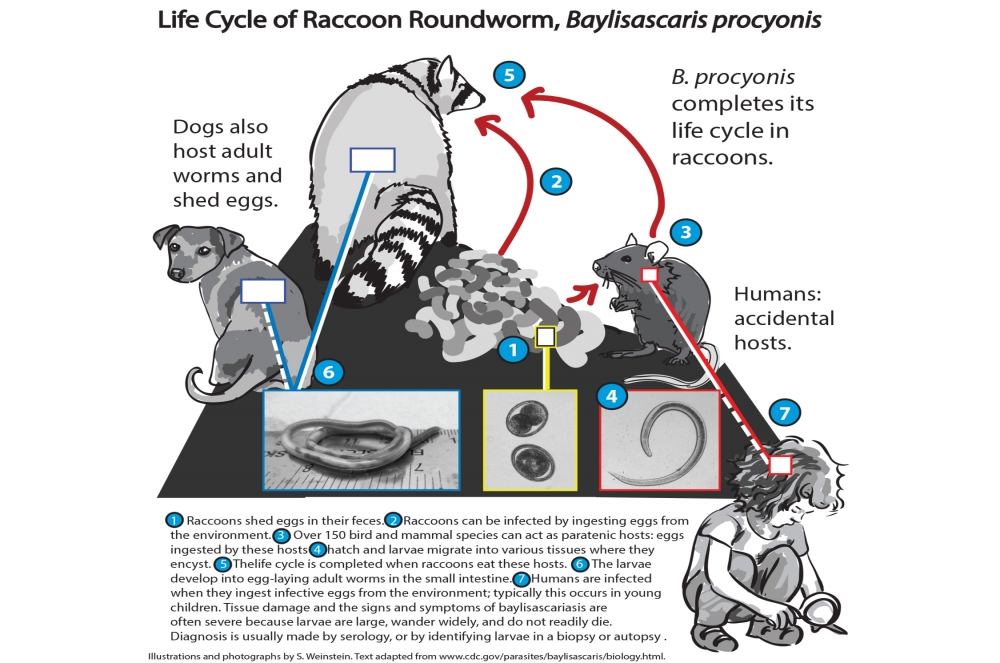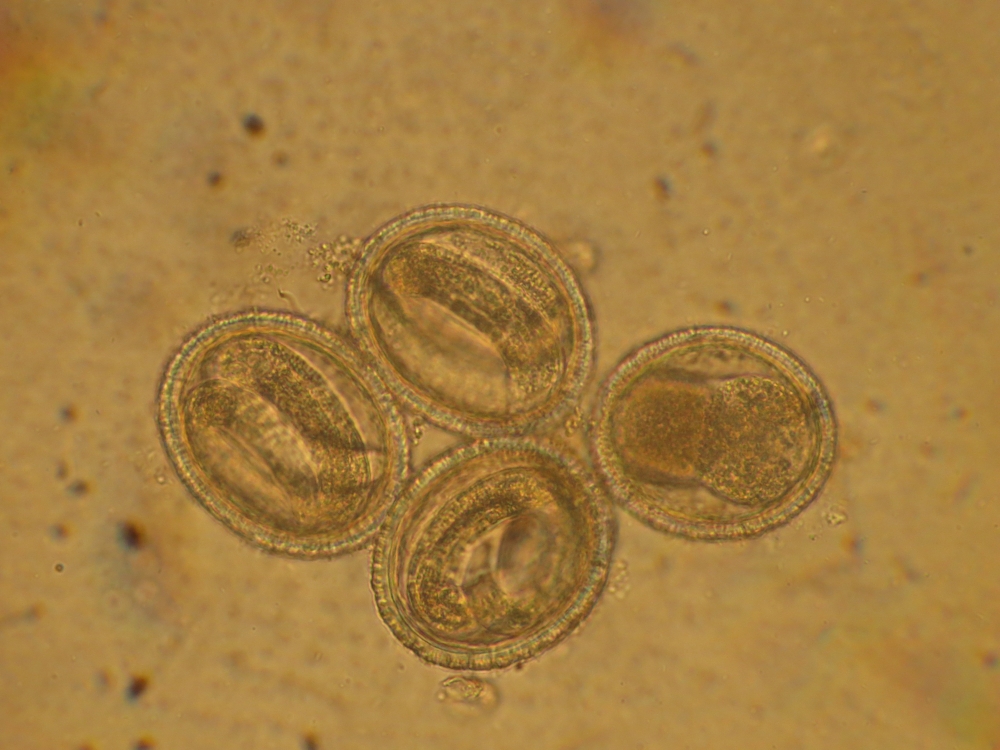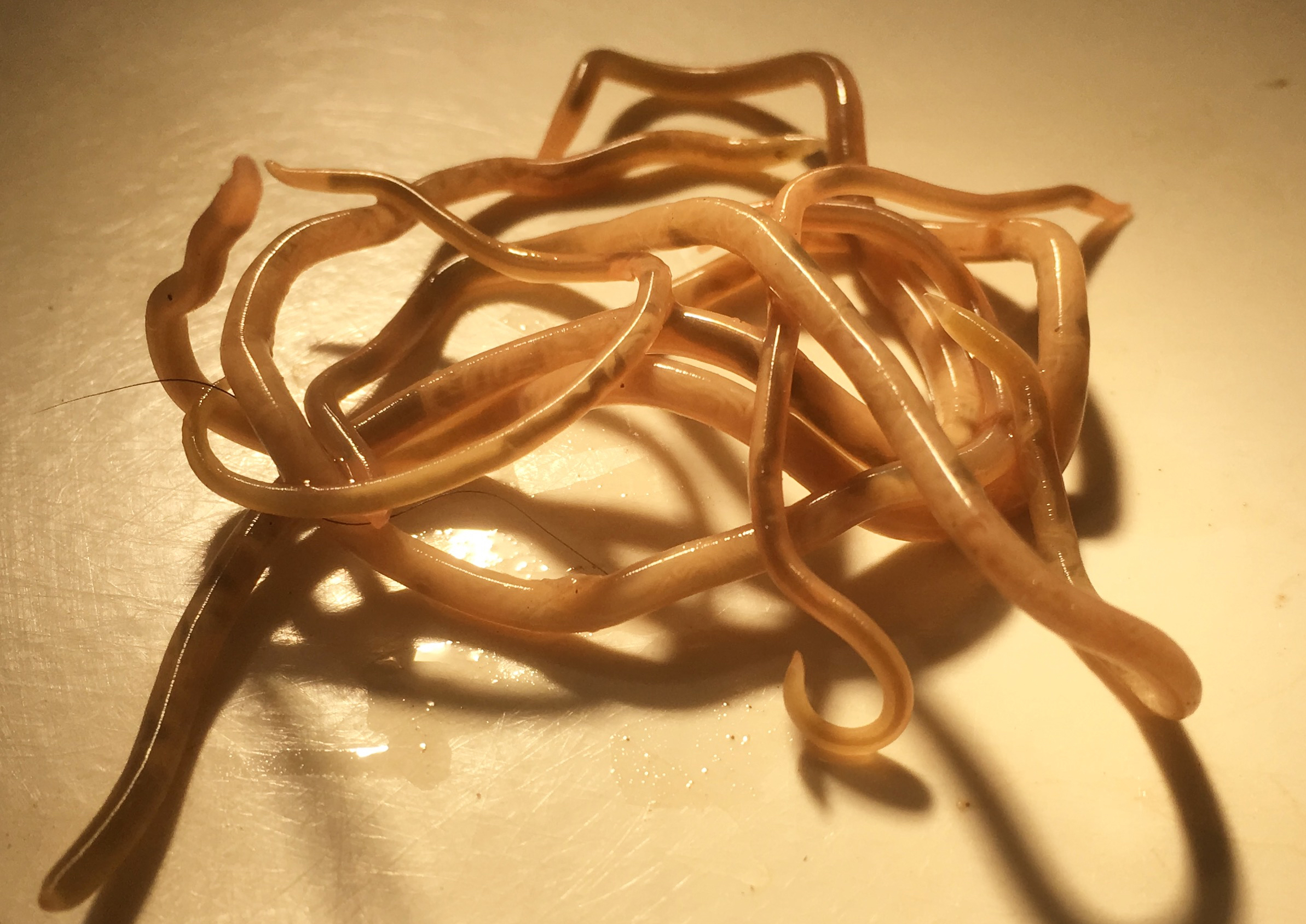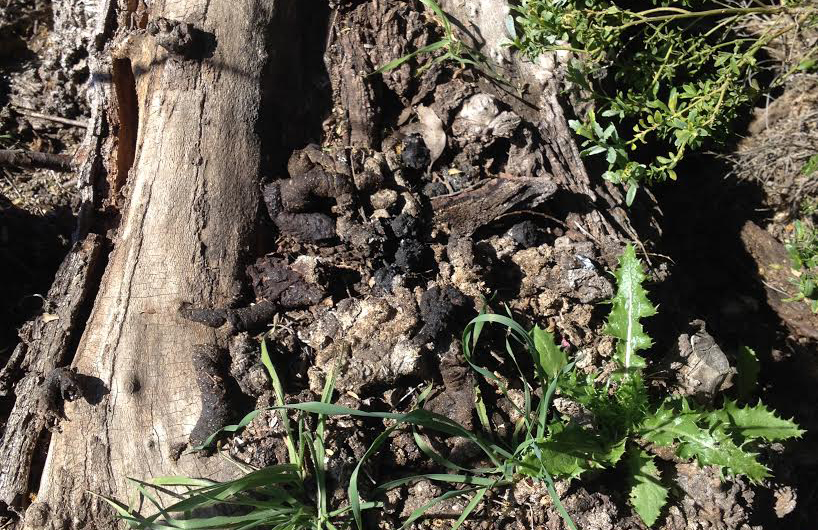
The raccoon that topples your trashcan and pillages your garden may leave more than just a mess. More likely than not, it also contaminates your yard with parasites — most notably, raccoon roundworms (Baylisascaris procyonis).
“If you see a raccoon in Santa Barbara, chances are that it’s full of roundworms,” said Sara Weinstein, a former UCSB doctoral student now at the University of Utah. That is true in varying degrees throughout North America, where urban raccoons may infect people more than previously assumed.
Led by Weinstein, the UCSB researchers wondered if most human infections went undetected. In collaboration with the Centers for Disease Control and Prevention (CDC), they screened blood samples from 150 healthy Santa Barbara residents. Their study, appearing in the CDC journal Emerging Infectious Diseases, found that 7 percent of surveyed individuals tested positive for raccoon roundworm antibodies. That was news to Weinstein, who said the researchers wouldn’t have been surprised if they’d found no evidence of human infection.
According to collaborator Kevin Lafferty, a researcher with the U.S. Geological Survey, “These common — but undetected — infections have unknown health effects in people.”
Over 90 percent of raccoons in Santa Barbara play host to this parasite, which grows to about the size of a No. 2 pencil and can produce over 100,000 eggs per day. “These eggs are really small — about 400 of them can fit on the head of a pin,” Weinstein said. “And soap, alcohol, even bleach won’t kill them.”
These microscopic eggs can survive over a year in the environment, creating a disease risk for hundreds of other animals, including humans. If accidently consumed by a bird, a rodent or a person, the parasite’s eggs can hatch. But, said Weinstein, “they don’t just stay in the gut like they would in a raccoon — instead they migrate through the body.” Sometimes they reach the brain, with potentially devastating consequences. This
infection, termed “baylisascariasis,” kills mice, has endangered the Allegheny woodrat and has caused disease like blindness or severe brain damage in dozens of people, including a toddler in Santa Barbara back in 2002. Dogs, which can provide a parasite-friendly environment similar to that of raccoons, have been known to host adult roundworms and to shed the eggs in their feces.
People who handle raccoons frequently such as researchers and wildlife rehabilitators in Santa Barbara know to take precautions to avoid infection (and none in the study were infected) and Weinstein has worked to educate the general public to take similar precautions.
According to CDC, people should avoid contact with raccoons and their feces. Raccoons can be discouraged from living around your home and yard by reducing their access to den sites and food (such as pet food, unsecured trash cans, fish ponds and bird feeders). Raccoon defecation sites — “latrines” — pose the highest risk, and these sites can be removed, either by pest control companies or by following CDC recommendations available at https://www.cdc.gov/parasites/baylisascaris/resources/raccoonlatrines.pdf.
Study co-authors also include Camille Lake of UCSB and Uniformed Services University of the Health Sciences, Armand Kuris of UCSB, David Fisk at Sansum Medical Clinic, Philip L. Kahn at UC Berkeley, Holly M. Chastain of CDC and IHRC Inc., and Sukwan Handali, Susan P. Montgomery and Patricia P. Wilkins of CDC.
Funding for this project was provided by the National Science Foundation Graduate Research Fellowships program.









